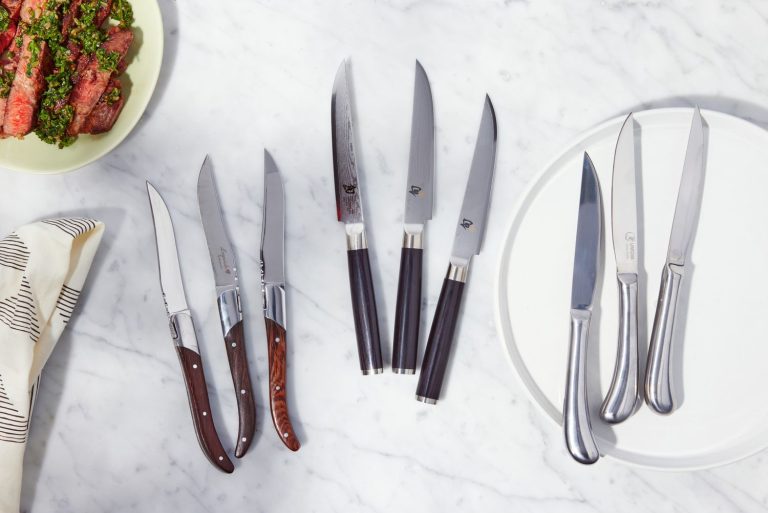9 Best Green Teas for Health and Flavor
Green tea isn’t just a beverage; it’s a lifestyle choice that promises numerous health benefits and a moment of tranquility in your busy day. From boosting metabolism to enhancing mental clarity, green tea has become a go-to for wellness enthusiasts worldwide. But with so many options on the market, how do you choose the best one?
In this guide, we’ll explore the top 9 green teas that stand out for their flavor, quality, and health benefits. Whether you’re a seasoned tea drinker or a curious newcomer, you’ll find options that cater to your taste and wellness goals. Dive in and discover your next favorite cup of green tea.
Exploring the Varieties of Green Tea
Types of Green Tea You Should Know
Green tea comes in various types, each offering unique flavors and benefits. You should know the following popular types:
- Sencha: This is the most common green tea in Japan. It has a fresh, grassy taste and is known for its high antioxidants.
- Matcha: A finely ground powder from shade-grown leaves, Matcha boasts a rich, umami flavor and numerous health benefits, including boosted metabolism.
- Gyokuro: Considered a premium variety, Gyokuro is shade-grown, resulting in a sweet, less astringent taste and a vibrant green color.
- Genmaicha: This tea blends Sencha with roasted brown rice, giving it a unique toasty flavor and making it less bitter.
- Hojicha: Made from roasted green tea leaves, Hojicha has a distinct, smoky flavor and lower caffeine content.
- Bancha: Harvested from the same plant as Sencha but picked later, Bancha offers a milder, more robust flavor.
- Kukicha: Also known as twig tea, Kukicha is made from tea stems and has a creamy, nutty taste.
- Longjing (Dragon Well): This Chinese green tea is pan-fried, giving it a subtly sweet, chestnut flavor.
- Bi Luo Chun: Another Chinese green tea, Bi Luo Chun has a fruity, floral aroma and twisted leaf structure.
What Makes Each Type Unique?
Understanding what sets each type apart can help you choose the perfect green tea for your taste and health needs.
- Sencha’s Freshness: Its steaming process preserves the bright, grassy character, making it a favorite for daily drinking.
- Matcha’s Potency: You consume the entire leaf, leading to higher antioxidants and nutrients. It’s ideal for lattes or culinary uses.
- Gyokuro’s Sweetness: Shading increases chlorophyll and amino acids, resulting in a sweeter, full-bodied tea.
- Genmaicha’s Toastiness: The roasted rice adds a comforting, warm flavor, reducing bitterness and offering a balanced taste.
- Hojicha’s Roasting: Its roasting process gives Hojicha a unique smoky flavor and lower caffeine, perfect for evening relaxation.
- Bancha’s Robustness: Later harvesting imparts a fuller, richer taste, making it a robust choice for those who prefer stronger flavors.
- Kukicha’s Creaminess: The use of stems and twigs gives it a distinct, creamy flavor, often enjoyed by those seeking a less traditional tea experience.
- Longjing’s Sweetness: The pan-frying technique gives this tea its characteristic sweet, chestnut flavor, distinguishing it from other green teas.
9
1. Matcha: The Potent Powder
What Is Matcha?
Matcha is a finely ground powder made from specially grown and processed green tea leaves. Unlike other green teas, you consume the whole leaf, providing a more concentrated source of nutrients. Rich in antioxidants, particularly catechins, matcha can enhance your body’s natural defenses.
Best Uses for Matcha Green Tea
Matcha shines in various culinary applications beyond traditional tea. You can whisk it into water for a frothy beverage or blend it into smoothies for a nutritious boost. Bakers often add matcha to cakes and cookies, providing a unique flavor and vibrant green hue. You can also use matcha as a seasoning for savory dishes, adding both color and health benefits.
2. Sencha: The Popular Choice
Sencha is one of Japan’s most consumed green teas, widely appreciated for its refreshing taste and numerous health benefits.
What Makes Sencha Stand Out?
Sencha stands out thanks to its uniquely steamed leaves that capture a vibrant green hue and grassy aroma. Its flavor balances notes of sweetness with a mild astringency, appealing to both new and seasoned tea drinkers. Known for a high catechin content, Sencha offers anti-inflammatory and weight-loss benefits. Regular consumption can also offer better heart health and improved cognitive function. Sourced mainly from Shizuoka, Japan, Sencha’s quality and flavor vary depending on harvesting conditions and processing methods.
Culinary Uses of Sencha
Culinary uses of Sencha extend beyond just brewing tea. Its leaves can be ground into a powder and sprinkled over dishes like rice and salads for an added nutritional boost. Sencha can also be infused into broths to create a depth of flavor in soups. Its liquid extract or brewed form is used in beverages, cocktails, and even ice creams, giving a slight tang and a hint of green tea essence. The versatility of Sencha makes it an excellent ingredient for both savory and sweet culinary applications.
3. Gyokuro: The Shade-Grown Delicacy
Known for its unique cultivation process, Gyokuro stands out among green teas. It offers a rich umami flavor that tea enthusiasts cherish.
Understanding the Gyokuro Process
Gyokuro’s distinct taste comes from its shading process. Farmers cover the tea plants with bamboo mats or cloth for about three weeks before harvest. This limits sunlight, resulting in higher chlorophyll content and lower tannin levels. The leaves take on a darker green hue, contributing to the tea’s signature sweetness and umami taste. Brush up on this cultivation method to appreciate the effort behind each cup of Gyokuro.
Savoring Gyokuro: Tips and Tricks
Brewing Gyokuro requires specific steps to maximize its flavor. Use cooler water, around 120°F to 140°F, to prevent bitterness. Steep the leaves for about 2-3 minutes, ensuring a rich, full-bodied flavor. Consider using a kyusu, a traditional Japanese teapot with a side handle, for the best results. Reuse the leaves for multiple infusions, adjusting steep time as needed. Sip Gyokuro slowly to enjoy its complexity and depth. For an enhanced experience, pair it with light snacks like rice crackers that won’t overpower the taste.
4. Genmaicha: The Nutty Blend
Ever heard of Genmaicha? It’s a unique Japanese green tea blend with an unmistakable nutty flavor.
Genmaicha and Its Distinctive Ingredients
Genmaicha combines green tea leaves with roasted brown rice. You get a toasty aroma and a warm, nutty taste that’s truly distinctive. The roasted rice sometimes pops during roasting, making it look similar to popcorn. This tea provides a gentle caffeine boost, perfect for those who want a milder green tea option.
Ideal Occasions for Genmaicha Consumption
Enjoy Genmaicha during a quiet afternoon break or as a meal accompaniment. Its soothing taste pairs well with savory dishes, making it great for lunch or dinner. For a calming evening ritual, this tea can help unwind after a long day without keeping you up at night.
5. Dragon Well (Longjing): The Emperor’s Choice
The History of Dragon Well
Dragon Well, or Longjing, has a storied history dating back to the Tang Dynasty. This revered green tea originates from the Hangzhou region in Zhejiang province. Emperors favored it, making it a tribute tea for centuries. Renowned for its flat, jade-green leaves and subtle, nutty flavor, Longjing remains a symbol of Chinese tea culture.
Brewing the Perfect Cup of Longjing
To brew the perfect cup of Longjing, start with fresh, high-quality leaves. Use water heated to 175°F (80°C) to avoid scalding the delicate tea. Steep 1-2 teaspoons of leaves for 2-3 minutes. Pour slowly into a pre-warmed cup, then enjoy the smooth, chestnut notes. For the best experience, use glass or porcelain teaware, which enhances the tea’s flavor and aroma.
6. Bi Luo Chun: The Delicate Spiral
Bi Luo Chun, also known as Green Snail Spring, hails from Jiangsu province and is celebrated for its delicate spiral-shaped leaves and exquisite flavor.
Unpacking the Flavor Profile of Bi Luo Chun
Bi Luo Chun boasts a unique and complex flavor profile. You’ll notice its floral and fruity notes, coupled with a subtle sweetness that lingers on your palate. This tea has a refreshing aroma, thanks to the leaves being harvested in early spring when they are tender and young. When brewed at 160-170°F (70-75°C) for around 1-2 minutes, you can evade bitterness and enjoy its delicate, fresh taste to the fullest.
Pairing Bi Luo Chun with Food
Pairing Bi Luo Chun with food can enhance your overall dining experience. Its light, floral notes complement seafood dishes like shrimp or scallops, balancing their rich flavors. The tea’s subtle sweetness meshes well with fruit salads, especially those featuring berries or citrus. For a delightful contrast, you can also try pairing it with mild cheeses, enhancing each bite with Bi Luo Chun’s refreshing finish.
7. Houjicha: The Roasted Refreshment
Houjicha stands out among green teas with its distinct roasting process that imparts a rich, toasty flavor and a mild caffeine content. This tea offers a unique experience for those seeking something beyond typical green tea profiles.
What Distinguishes Houjicha?
Roasting Process: Houjicha is made by roasting bancha or sencha tea leaves at high temperatures, giving it a reddish-brown hue. This process mellows the tea’s natural astringency, replacing it with a warm, nutty flavor.
Low Caffeine: Thanks to the roasting process, Houjicha has lower caffeine levels than other green teas, making it suitable for all-day consumption, especially in the evenings.
Aromatic Experience: The roasting brings out a soothing, caramel-like aroma. This unique scent enhances the overall tea-drinking experience, offering comfort and relaxation.
Benefits and Best Times to Drink Houjicha
Promotes Relaxation: Due to its low caffeine, Houjicha is perfect for unwinding after a long day. It’s a great replacement for higher-caffeine drinks when you’re looking to relax.
Digestive Aid: The roasted nature of Houjicha can help aid digestion. It’s ideal for drinking after meals to help soothe the digestive tract.
Versatile Use: Houjicha can be enjoyed hot or cold, and it’s perfect for pairing with sweet desserts or even savory snacks. Its mild profile complements various flavors without overpowering them.
These qualities make Houjicha a captivating choice for both green tea enthusiasts and newcomers.
8. Kukicha: The Twig Tea
Kukicha, also known as twig tea, is a distinctive Japanese green tea made from the stems, stalks, and twigs of the tea plant. This unique blend offers a different experience from leaf-based teas.
The Composition of Kukicha
Kukicha consists primarily of the stems and twigs of the Camellia sinensis plant. Unlike most green teas that use leaves, Kukicha’s composition includes parts of the plant often discarded in other teas. This creates a tea that’s lower in caffeine and high in L-theanine, providing a relaxing effect. Its composition also contributes to a unique flavor profile, combining grassy, woody, and slightly creamy notes.
Why Kukicha Might Be Your New Favorite
Kukicha offers several advantages that might make it your new go-to tea. First, it’s incredibly versatile. You can enjoy it hot or cold, and it pairs well with many dishes, from savory to sweet. Second, its low caffeine content makes it perfect for any time of day, including evenings. Lastly, Kukicha’s high levels of antioxidants and minerals can support overall wellness, promoting relaxation and a sense of calm. Whether you’re a green tea enthusiast or new to tea, Kukicha’s unique taste and benefits are definitely worth exploring.
9. Jasmine Green Tea: The Fragrant Fusion
The Art of Scenting Jasmine Tea
The art of scenting jasmine tea dates back to ancient China, where tea leaves are carefully infused with blooming jasmine flowers. This intricate process involves layering fresh green tea leaves with jasmine blossoms and repeating the process multiple times to achieve the desired fragrance. Each layering cycle can take several hours, ensuring that the tea absorbs the jasmine scent fully. The result is a delicate balance between the fragrant aroma of jasmine and the fresh, grassy notes of green tea.
Jasmine Green Tea in World Cuisine
Jasmine green tea has found its place in world cuisine, particularly in Asian cooking and fusion dishes. It pairs wonderfully with savory meals, such as sushi or dim sum. In desserts, jasmine green tea can be used to flavor cakes, ice creams, and pastries, adding a subtle floral note that’s both exotic and refreshing. Additionally, it’s a popular choice for creating unique tea blends, cocktails, and mocktails that stand out due to their distinctive aroma and taste. Whether you’re enjoying it on its own or as part of a culinary creation, jasmine green tea offers a captivating experience.
Making Your Selection: Tips for Choosing the Best Green Tea
Choosing the best green tea can seem like a daunting task, but with a few key tips, you’ll be well on your way to finding your perfect cup.
Considering Quality and Origin
Focus on quality when selecting green tea. Look for tea leaves that are whole, vibrant, and aromatic. High-quality green tea often hails from reputable growing regions like Japan and China. For instance, Matcha from Uji and Sencha from Shizuoka, Japan, are renowned for their superior quality. By prioritizing tea from established regions, you ensure the tea is crafted with expertise and tradition.
Understanding Labels and Grades
Pay attention to labels and grades on green tea packages. Common grades include ceremonial, premium, and culinary for Matcha. Ceremonial grade is the highest quality, perfect for traditional tea ceremonies. Premium grade offers a balance of quality and affordability, suitable for everyday drinking. Culinary grade, though lower in quality, is ideal for cooking and baking. Knowing these distinctions helps you make an informed choice based on your intended use.
Conclusion
Exploring the world of green tea opens up a realm of flavors and health benefits that cater to various tastes and preferences. Whether you’re drawn to the vibrant energy of Matcha, the toasty notes of Houjicha, or the unique blend of Genmaicha, there’s a green tea for every occasion. Remember to consider the quality, origin, and specific grades when selecting your green tea to ensure you get the best experience possible. With these insights, you’re well-equipped to enjoy and appreciate the rich diversity of green tea.






